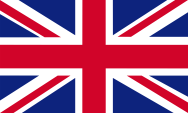Please read! This speeds up the search process immensely.
• The Flag-Finder is designed to help you identify a flag that you have seen somewhere and assign it correctly.
• The Flag-Finder works like a filter. You know the characteristics of the flag you are looking for. Now click through the flag finder and confirm or exclude certain of these features.
• The assignment of these flag characteristics is supported at the beginning of the search process by additional simple sample flags. However, these are only intended to provide a rough guide.
• The confirmation or exclusion of a certain characteristic is always done at the end of a line with such a button:
• If you are not sure about the names of the features, please read the explanations of terms on this page first.
• Some flags whose assignment is difficult or ambiguous may appear in several positions.
• Please note that several countries may fly the same flag or have flown it at different times! Check your judgement! Rule out confusion from the outset by tracing where you have seen the flag, e.g. on a ship in a film, or in TV reports, combat operations or sports broadcasts. When was the flag seen? A historical film, a historical TV report or a more recent report?
• If you are working your way through the Flag Finder looking for a particular flag, ignore the shape of the flag, or perhaps the shape of the coat of arms or other additions, until you are prompted to do so.
• Many flags have the same properties. This is why many flags can be seen on one page. You should therefore expect long loading times in some cases!
Phrase-Explanations:
striped lengthwise
• The flag has at least two or more stripes running from left to right, also of irregular or small width, also wavy lines or narrow white dividing lines count as stripes.
• The flag can also have an additional vertical bar on the flagpole, or a triangle, or a different coloured upper corner.
vertically striped
The flag has at least two or more stripes running from top to bottom, also of irregular or small width, wavy lines or narrow white dividing lines also count as stripes.
diagonally striped
The flag has at least two or more diagonal stripes, also of irregular or small width, also wavy lines or narrow white dividing lines count as stripes.
diagonally divided
The flag consists of two halves that are separated by the diagonal.
single-coloured base
The basic cloth (bunting) of the flag, ignoring all additions like coats of arms, stars or small flags in the upper corner or the like, consists of a single-coloured cloth, forming a single coloured area.
divided into four (quartered)
The flag consists of four quarters, which are divided by the side bisectors or the diagonals.
vertical cross
The flag is dominated by a large, straight cross, whether plain or coloured, whose ends extend to the edges.
diagonal cross
The flag is dominated by a large diagonal cross, whether plain or coloured, with the ends reaching to the corners.
Union Jack
The flag is completely or partially dominated by a Union Jack.
Border
The flag has a more or less conspicuous, wide or narrow, completely surrounding or only three-sided border. Be careful with fringes or similar decorative edges!
other indicators
The flag has none of the features described above.
Additions
When the Flag Finder refers to additions, this means coats of arms or stars, suns, animals, etc.

 START →
START → 

striped lengthwise
• The flag has at least two or more stripes running from left to right, also of irregular or small width, also wavy lines or narrow white dividing lines count as stripes.
• The flag can also have an additional vertical bar on the flagpole, or a triangle, or a different coloured upper corner.
vertically striped
The flag has at least two or more stripes running from top to bottom, also of irregular or small width, wavy lines or narrow white dividing lines also count as stripes.
diagonally striped
The flag has at least two or more diagonal stripes, also of irregular or small width, also wavy lines or narrow white dividing lines count as stripes.
diagonally divided
The flag consists of two halves that are separated by the diagonal.
single-coloured base
The basic cloth (bunting) of the flag, ignoring all additions like coats of arms, stars or small flags in the upper corner or the like, consists of a single-coloured cloth, forming a single coloured area.
divided into four (quartered)
The flag consists of four quarters, which are divided by the side bisectors or the diagonals.
vertical cross
The flag is dominated by a large, straight cross, whether plain or coloured, whose ends extend to the edges.
diagonal cross
The flag is dominated by a large diagonal cross, whether plain or coloured, with the ends reaching to the corners.
Union Jack
The flag is completely or partially dominated by a Union Jack.
Border
The flag has a more or less conspicuous, wide or narrow, completely surrounding or only three-sided border. Be careful with fringes or similar decorative edges!
other indicators
The flag has none of the features described above.
Additions
When the Flag Finder refers to additions, this means coats of arms or stars, suns, animals, etc.
